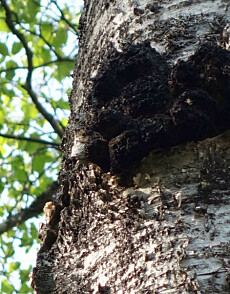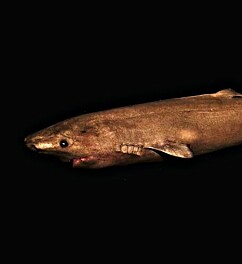
Zombie fungus controls ants like they’re puppets. Could it make the leap to humans like in ‘The Last of Us’?
In the popular TV series, a fungus has gained the ability to infect people.
The HBO series ‘The Last of Us’ has become a major success.
The story unfolds in a post-apocalyptic United States. A pandemic has laid waste to cities and destroyed society as we know it.
The cause is a fungus in the Cordyceps genus. Normally it lives by eating insects from the inside and taking control of their bodies.
In the series, the fungus has gained the ability to live in humans. Things aren’t going well for the humans. The fungus turns people into ravenous zombies who spread the infection at breakneck speed.
What if the climate gets a little warmer...?
The series begins with a warning. Two epidemiologists are interviewed about the possibility of a pandemic in a fictional TV show in 1968.
One of the experts, Doctor Neuman, denies that the prospect of a viral pandemic is what keeps him awake at night. Instead, he believes that fungi will pose the biggest threat.
He talks about fungi that can take control of the body and mind of insects.
The other expert parries that such fungi are real but not found in humans.
Doctor Neuman agrees that the fungi can’t live in humans because of our high body temperature. But what if it gets a little warmer, what if the fungus has a reason to evolve?
Fast forward to 2003: disaster strikes. A fungus of the Cordyceps type has acquired the ability to infect humans.
Is any of this rooted in reality?
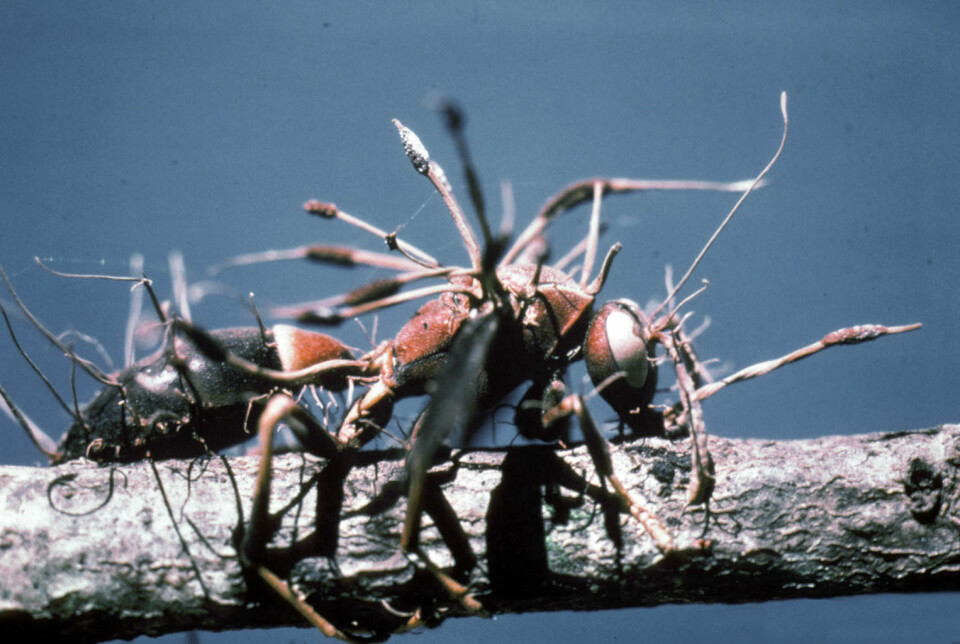
Pulling the strings
These fungi actually do exist and are no joke in the insect world.
They are parasitic fungi. Different species specialize in attacking different insects. Some also go after underground fungi or spiders.
The attack begins when a spore lands on an insect host.
“The spore begins to germinate inside the insect's body,” says Klaus Høiland, a fungus expert and professor emeritus at the University of Oslo.
“These hyphae – the filamentous fungal cells – are so smart that they keep the insect alive as long as they can suck nutrition out of it,” he says.
As the fungal threads spread throughout the insect's body, something begins to happen.
“The insect begins to behave like a zombie as the fungus grows inside the insect,” says Høiland.
The fungus affects the nervous system of the insects.
“It does this by partly settling in the nerve passages that have to do with the legs.”
“You could say that in a lot of ways the fungi control these insects like puppets. They pull the strings and make them do things that would otherwise be very unnatural for an insect,” says Høiland.
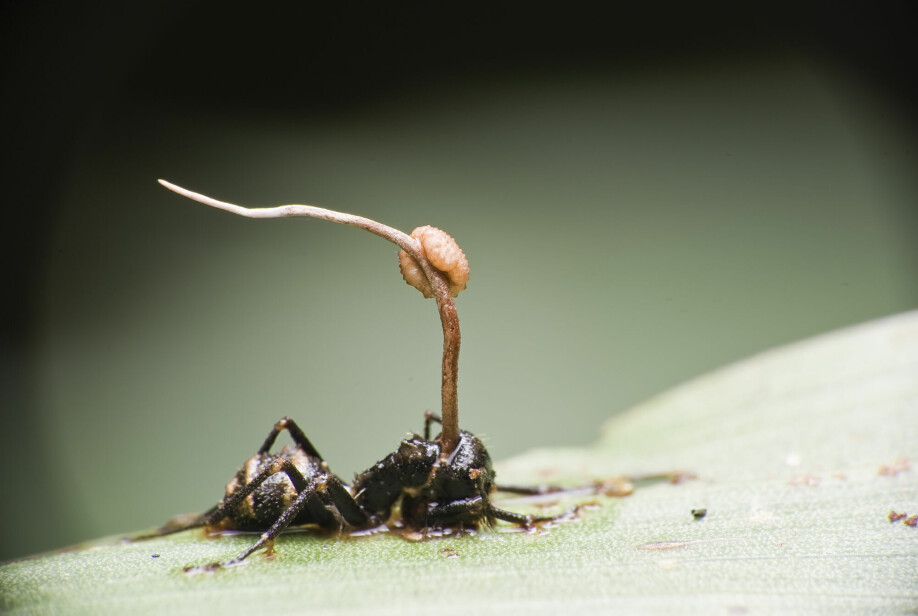
Right place to die
The infected insects do not bite other insects like in the zombie movies. Other ants in the colony may notice the strange behaviour of the victim ants.
“The ants are so smart that if they see that one of their friends is infected, they’ll probably carry it away. They react to the zombie effects,” Høiland says.
Once infected, the ant’s behaviour is out of its control, and eventually it climbs onto a leaf or straw stalk and bites down. This is where it will also die.
In a previous study, researchers found that the fungus is astonishingly precise in controlling the ant. It directs the ant to a location that is optimal for the fungus to complete its life cycle.
“The fruiting body of the fungus is formed and sprouts from the ant head,” says Høiland.
“It looks pretty scary, I have to say.”
The fungus shoots out spores that are spread by the wind and can land on a new ant. The cycle begins again.
Found in Norway
Cordyceps are also found in Norway.
“A few Cordyceps target ants, but I’ve never seen any. But we have some that go after ground beetles and butterflies,” says Høiland.
Their tactics are the same, but instead of having the insects end their lives on a leaf, the fungus forces them to burrow down into the ground.
Before the butterfly or moth larva is about to pupate, it ends up in the soil instead. The fungus can then shoot up from the moist soil.
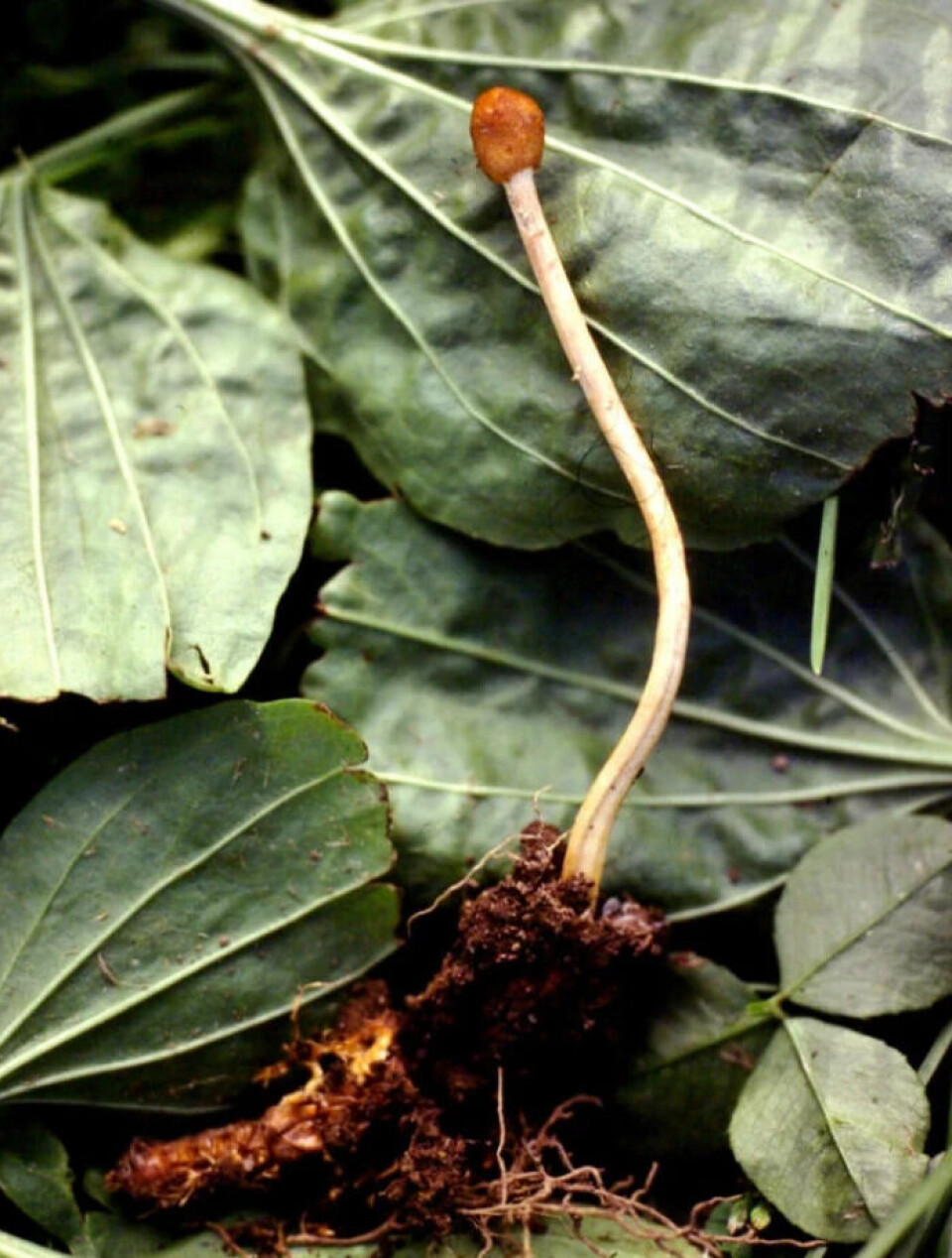
Medicine based on a fungal trick
Maybe you’ve heard of a microscopic fungus from Hardangervidda that contains a substance called cyclosporin. A drug has been developed from cyclosporin that is used by patients who have undergone organ transplants.
“What’s been shown is that the fungus is an asexual stage of one of the Cordyceps that feeds on beetles,” says Høiland.
An asexual stage is a kind of intermediate stage where the fungus only lives in the soil, a bit like a mould fungus.
This important immunosuppressive agent then, comes from a Cordyceps fungus – which is interesting and might explain its effect, says Høiland.
“The agent is perhaps a way to penetrate the insect's own immune system.”
Could it make the leap to humans?
A point made in ‘The Last of Us’ series is that the high body temperature of mammals normally keeps fungal parasites at bay. The show suggests that if the world gets warmer, fungi like Cordyceps might evolve to tolerate higher heat.
“It's a fun film explanation, but it's science fiction,” says Høiland.
“The mammalian brain is put together in such a completely different way from that of insects that it wouldn’t be possible,” he says.
The fungi are specialized for different insect species. An evolutionary process would have to take place for them to make the leap to mammals,.
“It would take a long time, and it hasn’t yet happened. These fungi go back to the Cretaceous period. Scientists have found fossils of insects that were infected.”
The Cretaceous period was the last period in the age of the dinosaurs. Since then, "there has clearly been no such evolution to mammals at all," says Høiland.
Not found in humans
Håvard Kauserud is a professor of biology at the University of Oslo and studies fungi.
He agrees that the scenario is highly unlikely.
“Cordyceps, or more precisely the Ophiocordyceps fungi, are far from the scariest fungi for humans. To my knowledge, these fungi have never been found in humans, even in people with weakened immune systems,” says Kauserud.
“These fungi are specialized insect parasites, so the chance of them starting to grow in humans is pretty miniscule.”
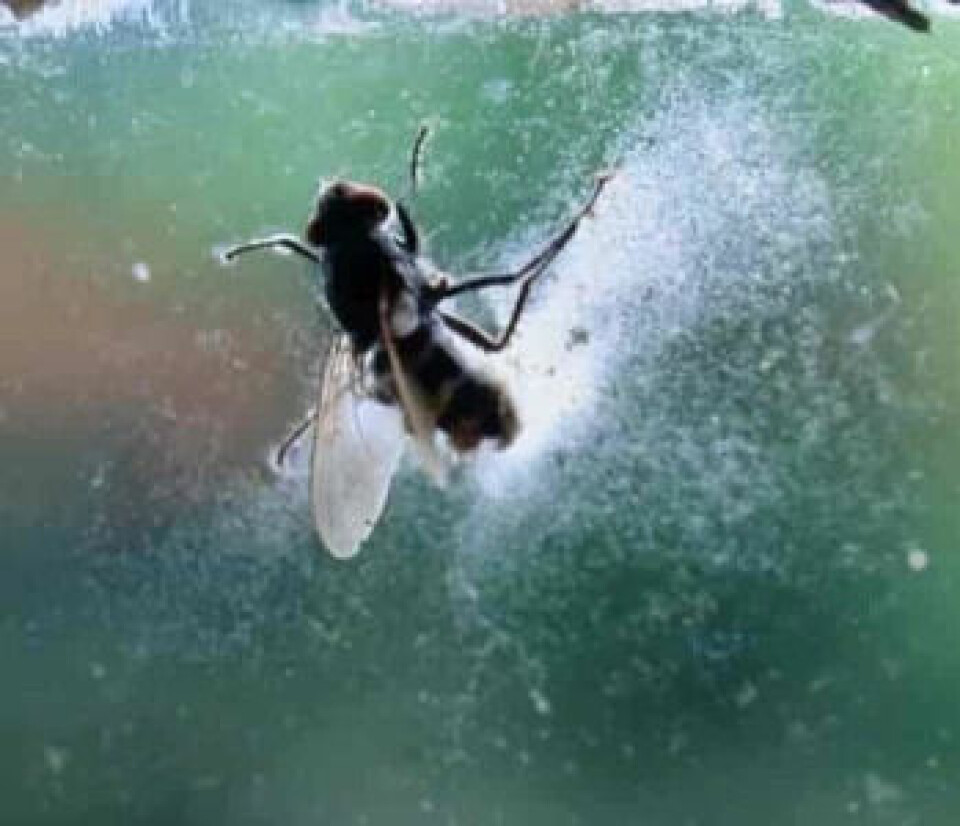
More kinds of fungi
Kauserud says that there is another group of fungi that functions much the same as Cordyceps, called Entomophthoromycotina. These fungi can also control and change the behaviour of insects.
“That group of fungi has actually been found on humans. If someone wanted to make a slightly more scientifically-based horror series, I might have linked it to this fungus group instead,” says Kauserud.
One species of this fungi found in Norway is Entomophthora muscae, a pathogenic fungus that infects flies.
“If you’ve been in a barn, you often see mummified flies on the windows that have been infected by these fungi. Spores are ejected from the rear of the fly carcasses at other flies that are attracted by pheromones.”
Uncomfortable in human body temperature?
It’s true that the body temperature of mammals is too high for most fungi, says Kauserud.
“Mammals and humans are very well protected against fungal infections because we have a high body temperature of 37 degrees Celsius. Very few fungi can tolerate that temperature.”
Some fungi, such as thrush yeast, can tolerate it and live on and in us. That’s fine. But sometimes these harmless fungi can become dangerous if the immune system is severely weakened.
The idea that climate change might make fungi better adapted to higher temperatures and thus to humans has not been fully studied, says Kauserud.
“But I’m not sure that it will be an important factor. After all, the Earth has a lot of hot spots already,” he says.
50 frog species exterminated
Fungal diseases are generally more common in animals with lower body temperatures, such as insects, arachnids and amphibians.
Over the past 20 to 25 years, a fungus called BD has spread from East Asia to other parts of the world. It is fatal for frogs that are not used to it.
“The BD fungus is perhaps the worst pathogenic organism the world has experienced. It attacks frogs and amphibians,” says Kauserud.
“Scientists believe BD has wiped out over 50 species of frogs and caused large declines in the populations of other species.”
The main reason for the spread is global trade. This is also the case with the spread of many fungal parasites that feed on plants.
What about other mammals?
“A few fungal diseases in mammals can cause widespread disease outbreaks. One of them affects bats,” says Kauserud.
Bats hibernate and lower their body temperature. This makes them more vulnerable to fungal infections.
In North America, millions of bats have been killed by P. destructans, a fungus that causes white-nose syndrome, says Kauserud. The fungus actually comes from Europe, where bats have developed greater immunity against it.
Fungal pandemic is highly unlikely
Kauserud believes it is altogether unlikely that a fungus would cause a major epidemic among healthy people.
Only a small number of fungi can attack people with a well-functioning immune system. In North America, various types of yeasts have caused some minor outbreaks and some deaths.
“Put it this way – I’m much more worried about viruses and bacteria.”
However, quite a few fungi can cause serious illness in immunocompromised patients.
Two of the scariest are Candida auris and Aspergillus fumigatus, which kill thousands of people every year.
These are particularly dangerous because they have developed antibiotic resistance to azoles, which are usually used to fight fungal infections, says Kauserud.
Another type of fungus causes the disease mucoromycosis, which also mainly attacks people with weakened immune systems. This illness took the lives of many thousands of people in India during the COVID-19 pandemic.
Other more common fungal infections are athlete's foot and ringworm. They are quite harmless, but are spread from person to person.
None affect the mind
None of the fungal diseases mentioned can affect human behaviour.
But another organism out there might do that.
Toxoplasma gondii is a single-celled parasite that has nothing to do with fungi. But it manipulates mice to be less afraid of cats. The parasite needs to enter a cat's digestive system to complete its life cycle.
“The parasite makes mice love cats,” says Høiland.
The parasite can also end up in humans. Statistics may indicate that people with the parasite are more risk-seeking,” Høiland says.
Medieval horror disease
In the Middle Ages there was a fungus that caused a lot of trouble and caused people to hallucinate.
This fungus was powdery mildew, which produced black growths on grain caused by the fungus Claviceps purpurea.
People let the black lumps remain at harvest time and thought they would dry out the grain in rainy years.
Outbreaks of illness would suddenly occur in which people suffered painful convulsions, hot flushes and hallucinations. Some people threw themselves into wells to relieve the burning sensation, Høiland wrote in an earlier Norwegian blog post.
In those who survived, the disease could progress slowly with gangrene and toes or limbs falling off.
LSD is manufactured from a substance in powdery mildew.
However, the hideous disease is not due to the fungus starting to grow in humans. People ingested toxins that the fungus produces to keep mice and other animals away from the Claviceps purpurea fungi when they fall to the ground.
The fungus freak show
In fact, the fungus that makes powdery mildew is in the same order as Cordyceps, says Høiland. When the fruiting body bursts out of the powdery mildew, it looks like a tiny Cordyceps, he says.
Both fungus types belong to the order Hypocreales.
“I like to call it the fungus freak show. The amount of strange things that can be found in this group of fungi is just incredible.”
———
Read the Norwegian version of this article at forskning.no











